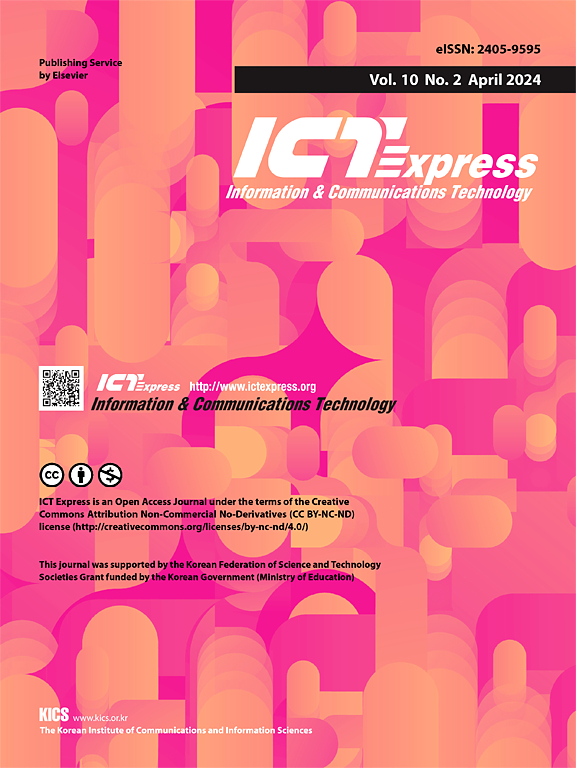Towards accurate positioning: Directionality-enhanced fingerprinting radio map
IF 4.2
3区 计算机科学
Q1 COMPUTER SCIENCE, INFORMATION SYSTEMS
引用次数: 0
Abstract
The most essential element of location based service is accurate user localization. Considering the existing indoor infrastructure of the internet of things and WiFi access points, along with the widespread use of smartphones by individuals, fingerprinting technology emerges as the most promising indoor navigation system in terms of cost-effectiveness, performance, and accessibility. To estimate the user's location by fingerprinting, a fingerprinting radio map must be created in advance. The radio map contains received signal strength indicator (RSSI) vectors and its collection locations. In an indoor environment, RSSI values vary greatly depending on the collection direction, even if they are received from the same location. To compensate for this feature of RSSI, this paper proposes a new fingerprinting radio map that considers directionality. Since pedestrians can move in various directions indoors, all RSSI values collected along those directions are included in the radio map. In the location estimation step, the current location is estimated by comparing the spatial RSSI sequence of the current pedestrian with the reference points in different directions that have the highest correlation. To validate the proposed method, we analyzed the user location results using the existing radio map and the proposed radio map and found that the proposed radio map improved the positioning performance.
精确定位:方向性增强的指纹无线电地图
基于位置的服务最基本的要素是准确的用户定位。考虑到现有的室内物联网基础设施和WiFi接入点,以及个人智能手机的广泛使用,指纹识别技术在成本效益、性能和可访问性方面成为最有前途的室内导航系统。为了通过指纹来估计用户的位置,必须事先创建指纹无线地图。无线电地图包含接收信号强度指示(RSSI)矢量及其收集位置。在室内环境中,即使从同一位置接收,RSSI值也会因采集方向的不同而变化很大。为了弥补RSSI的这一特点,本文提出了一种新的考虑方向性的指纹无线地图。由于行人在室内可以朝不同的方向移动,因此沿着这些方向收集的所有RSSI值都包含在无线电地图中。在位置估计步骤中,通过比较当前行人的空间RSSI序列与不同方向上相关性最高的参考点来估计当前行人的位置。为了验证提出的方法,我们使用现有的无线电波图和提出的无线电波图对用户定位结果进行了分析,发现提出的无线电波图提高了定位性能。
本文章由计算机程序翻译,如有差异,请以英文原文为准。
求助全文
约1分钟内获得全文
求助全文
来源期刊

ICT Express
Multiple-
CiteScore
10.20
自引率
1.90%
发文量
167
审稿时长
35 weeks
期刊介绍:
The ICT Express journal published by the Korean Institute of Communications and Information Sciences (KICS) is an international, peer-reviewed research publication covering all aspects of information and communication technology. The journal aims to publish research that helps advance the theoretical and practical understanding of ICT convergence, platform technologies, communication networks, and device technologies. The technology advancement in information and communication technology (ICT) sector enables portable devices to be always connected while supporting high data rate, resulting in the recent popularity of smartphones that have a considerable impact in economic and social development.
 求助内容:
求助内容: 应助结果提醒方式:
应助结果提醒方式:


